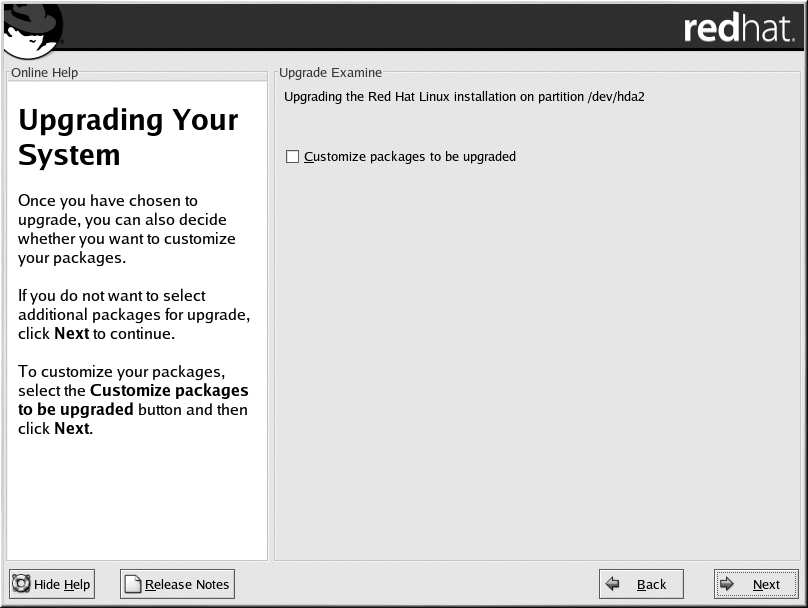


78
Appendix A. Upgrading Your Current System
A.3. Upgrading Your File System
Note
This section only pertains to users performing an upgrade from Red Hat Linux version 7.1 or earlier,
or from a Red Hat Linux 7.2 or 7.3 installation where ext2 was chosen as the file system.
If the installation program detects the ext2 file system on your Red Hat Linux system, you can choose
to retain your current ext2 file system or migrate to the ext3 file system.
The following is a brief description of the ext2 and ext3 file systems, and how they can be utilized.
ext2 An ext2 file system supports standard Unix file types (regular files, directories, symbolic
links, etc). It provides the ability to assign long file names, up to 255 characters. Versions prior to
Red Hat Linux 8.0 used ext2 file systems by default.
ext3 The ext3 file system is based on the ext2 file system and has one main advantage
journaling. Using a journaling file system reduces time spent recovering a file system after a crash
as there is no need to fsck
1
the file system.
It is recommended, but not required, that you choose to migrate to the ext3 file system.
If you choose to migrate to the ext3 file system, existing system data will not be modified.
A.4. Customizing Your Upgrade
Do you want to choose the packages to be upgraded or let the installation program perform an auto
mated upgrade (see Figure A 2)?
Figure A 2. Upgrade Customization
To perform an automated upgrade, click Next.
1. The fsck application is used to check and optionally repair one or more Linux file systems.
footer
Our partners:
PHP: Hypertext Preprocessor Best Web Hosting
Java Web Hosting
Inexpensive Web Hosting
Jsp Web Hosting
Cheapest Web Hosting
Jsp Hosting
Cheap Hosting
Visionwebhosting.net Business web hosting division of Web
Design Plus. All rights reserved
